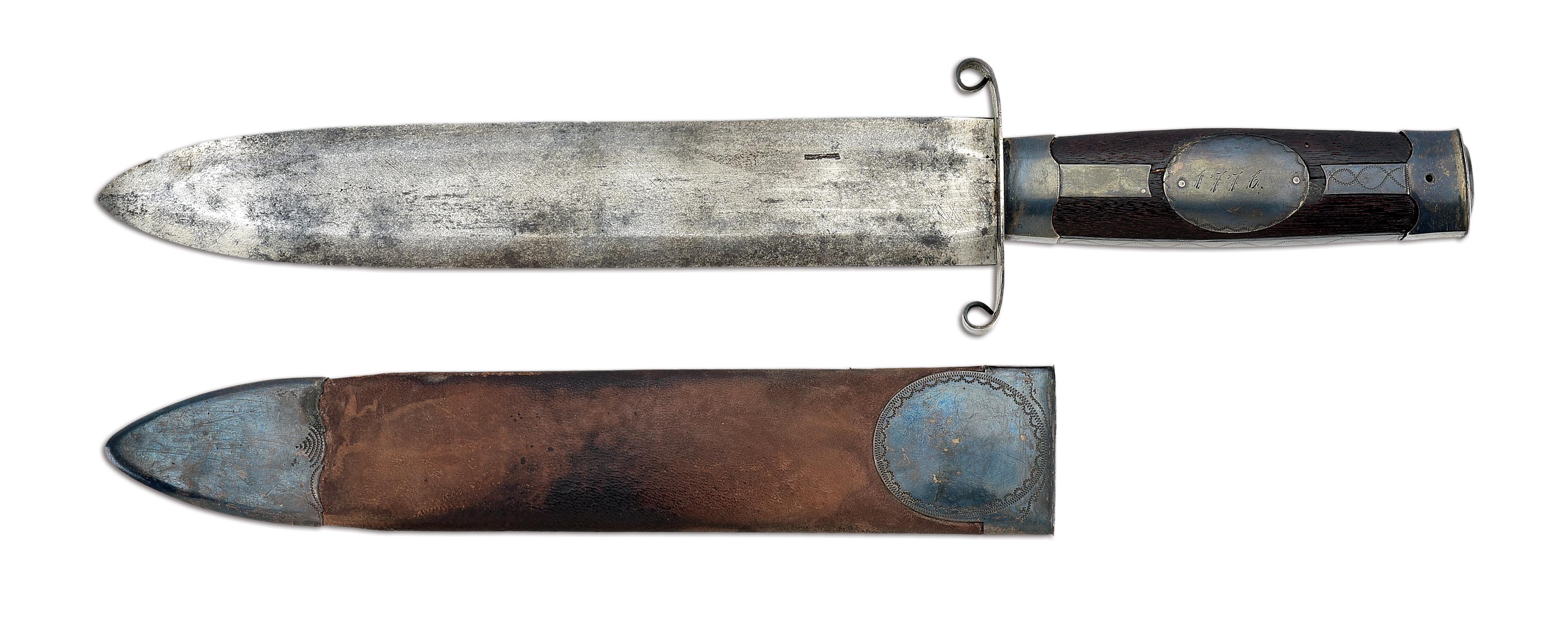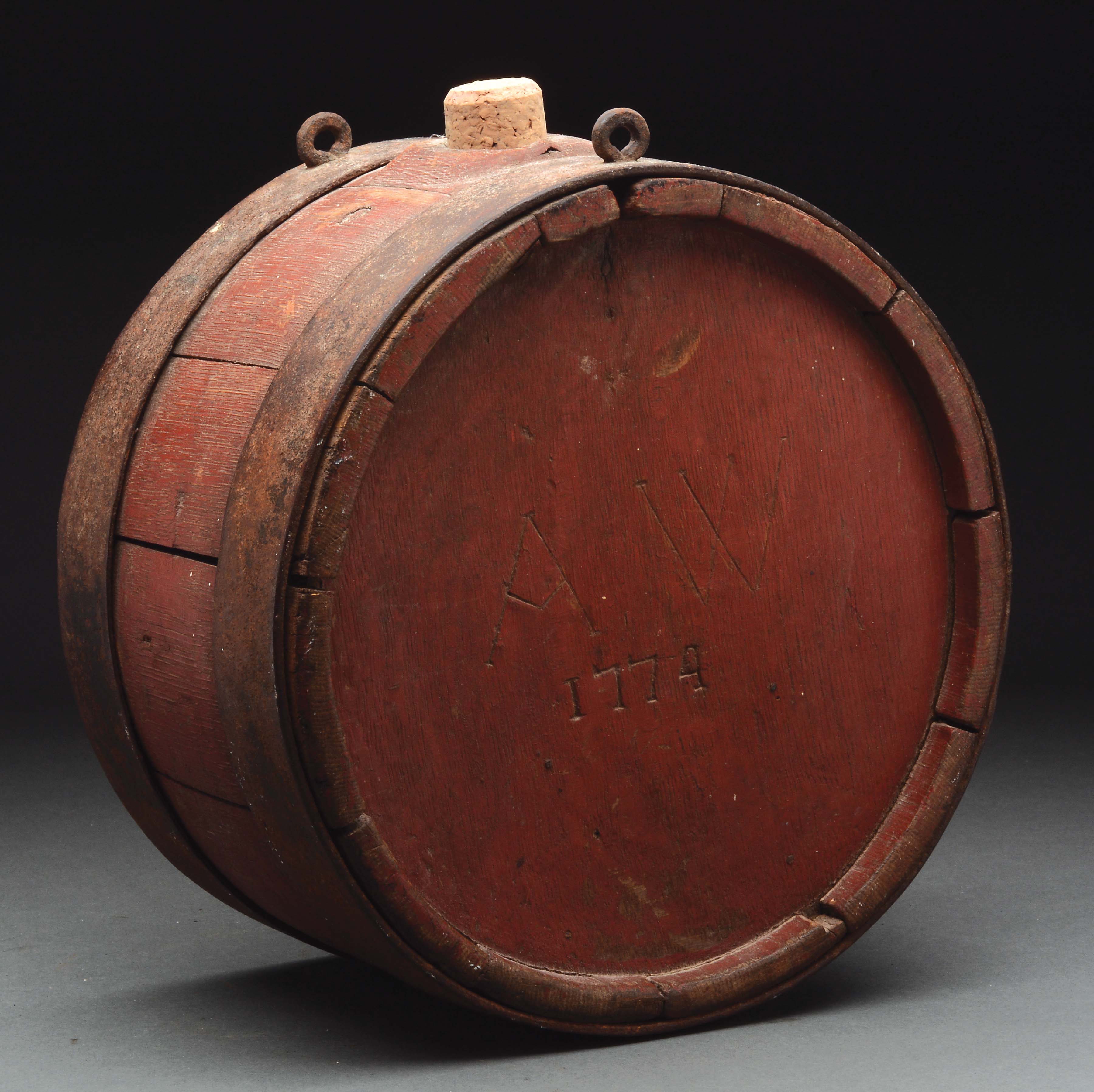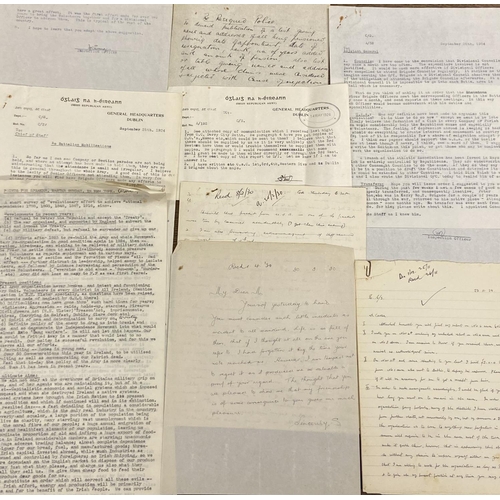Benjamin Bacon (Sr., 1726-1807) of Canterbury, Connecticut, served throughout the war as a captain in the 21st Connecticut Militia, part of the states’ defensive forces, and also sent as reinforcements to Washington in New York September 1776. Bacon was “established” by the Connecticut General Assembly as Ensign of the 9th Company (or Train Band), 11th Regiment of Militia, Col. Ebenezer Williams, in 1771; promoted Lieutenant, May 1774; and Captain, March 1775, the company by then part of Col. John Douglas’s 21st Regiment as militia regiments increased in number and their geographical boundaries changed. Bacon was a prominent member of his community, several times a representative to the colony and state General Assembly and rising to Lt. Colonel in the militia by 1790, by which rank he was later known. He commanded the company throughout the war with documents showing him as its captain from 1775 to at least September 1781. He answered the Lexington Alarm, marching, “to the relief of Boston,” in April 1775 along with other Canterbury members of the 21st Regiment, with service lasting six days, shorter than many from the town, but none served more than twenty. In Fall 1776 the 21st Regiment was called to reinforce Washington in New York, serving from September 7 to 20 March 1777, part of Saltonstall’s brigade of Connecticut Militia, at one point attached to Sullivan’s Division. A casualty report of Saltonstall’s command for October 28-30 shows light losses, but suggests participation in the Battle of White Plains. A November 1776 travel abstract lists Bacon in command of a lieutenant and 24 men. Thereafter the regiment seems to have been kept ready to respond to British coastal raids on Connecticut in 1777, 1779, and 1781 and may have seen service in response to the British attack on Rhode Island in August 1778. They were called up for two days service on September 4 on reports of British shipping off New London and the papers of Obediah Johnson, Colonel of the 21st from May 1777 to 1783, place him in Rhode Island in 1778. The regiment did not reach New London in time to take part in the defense against Arnold’s 1781 raid in early September, but a regimental return of 25 September 1781 at Canterbury lists Bacon as captain of a company with a lieutenant, ensign, 3 sergeants, 4 corporals, and 37 men, all under fifty years of age, with another 22 exempt and 2 on a tour of duty in a state regiment, indicating he was still active in the state’s defense forces. Also on that roll is Ephraim Lyon, having risen from lieutenant to adjutant and to captain of his own company. A second, almost identical Fusil is known via private collection, with coin silver thumb-piece inscribed in virtually identical style, “Ephraim Lyon, 1777”. Given similar fusils inscribed to the two men, but dated a year apart, it’s more than likely that Lyon saw and appreciated the Fusil owned by Bacon, and subsequently ordered one for himself by the same maker. An exhaustive search of known rifle makers during the period and of the area attributes the fusils’ construction to “Deacon Barrett” of Concord, Massachusetts whom Bacon likely had the occasion to visit in 1775-1777 during the Lexington Alarm. The fusil itself features a three-stage barrel with bayonet lug mounted on bottom towards muzzle, and a small silver front half-moon sight on top. There is a small notched iron rear sight mounted on the front of the barrel tang. Convex banana lockplate shows worn engraved maker's name in block letters. The brass furniture is of American manufacture and includes a stylized "Brown Bess" type triggerguard, but much fancier. Trigger guard has a hole for sling swivel. Stepped two-stage buttplate tang. Engraved brass ribbon sideplate. Unusual elongated trumpeted brass ramrod ferrules. Brass nose cap. Silver wrist escutcheon inscribed "MADE / BY DB / FOR / B. BACON / 1776". This inscription tends to imply that this Fusil was a special order by Bacon and that he was quite proud
Benjamin Bacon (Sr., 1726-1807) of Canterbury, Connecticut, served throughout the war as a captain in the 21st Connecticut Militia, part of the states’ defensive forces, and also sent as reinforcements to Washington in New York September 1776. Bacon was “established” by the Connecticut General Assembly as Ensign of the 9th Company (or Train Band), 11th Regiment of Militia, Col. Ebenezer Williams, in 1771; promoted Lieutenant, May 1774; and Captain, March 1775, the company by then part of Col. John Douglas’s 21st Regiment as militia regiments increased in number and their geographical boundaries changed. Bacon was a prominent member of his community, several times a representative to the colony and state General Assembly and rising to Lt. Colonel in the militia by 1790, by which rank he was later known. He commanded the company throughout the war with documents showing him as its captain from 1775 to at least September 1781. He answered the Lexington Alarm, marching, “to the relief of Boston,” in April 1775 along with other Canterbury members of the 21st Regiment, with service lasting six days, shorter than many from the town, but none served more than twenty. In Fall 1776 the 21st Regiment was called to reinforce Washington in New York, serving from September 7 to 20 March 1777, part of Saltonstall’s brigade of Connecticut Militia, at one point attached to Sullivan’s Division. A casualty report of Saltonstall’s command for October 28-30 shows light losses, but suggests participation in the Battle of White Plains. A November 1776 travel abstract lists Bacon in command of a lieutenant and 24 men. Thereafter the regiment seems to have been kept ready to respond to British coastal raids on Connecticut in 1777, 1779, and 1781 and may have seen service in response to the British attack on Rhode Island in August 1778. They were called up for two days service on September 4 on reports of British shipping off New London and the papers of Obediah Johnson, Colonel of the 21st from May 1777 to 1783, place him in Rhode Island in 1778. The regiment did not reach New London in time to take part in the defense against Arnold’s 1781 raid in early September, but a regimental return of 25 September 1781 at Canterbury lists Bacon as captain of a company with a lieutenant, ensign, 3 sergeants, 4 corporals, and 37 men, all under fifty years of age, with another 22 exempt and 2 on a tour of duty in a state regiment, indicating he was still active in the state’s defense forces. Also on that roll is Ephraim Lyon, having risen from lieutenant to adjutant and to captain of his own company. A second, almost identical Fusil is known via private collection, with coin silver thumb-piece inscribed in virtually identical style, “Ephraim Lyon, 1777”. Given similar fusils inscribed to the two men, but dated a year apart, it’s more than likely that Lyon saw and appreciated the Fusil owned by Bacon, and subsequently ordered one for himself by the same maker. An exhaustive search of known rifle makers during the period and of the area attributes the fusils’ construction to “Deacon Barrett” of Concord, Massachusetts whom Bacon likely had the occasion to visit in 1775-1777 during the Lexington Alarm. The fusil itself features a three-stage barrel with bayonet lug mounted on bottom towards muzzle, and a small silver front half-moon sight on top. There is a small notched iron rear sight mounted on the front of the barrel tang. Convex banana lockplate shows worn engraved maker's name in block letters. The brass furniture is of American manufacture and includes a stylized "Brown Bess" type triggerguard, but much fancier. Trigger guard has a hole for sling swivel. Stepped two-stage buttplate tang. Engraved brass ribbon sideplate. Unusual elongated trumpeted brass ramrod ferrules. Brass nose cap. Silver wrist escutcheon inscribed "MADE / BY DB / FOR / B. BACON / 1776". This inscription tends to imply that this Fusil was a special order by Bacon and that he was quite proud










.jpg)




Try LotSearch and its premium features for 7 days - without any costs!
Be notified automatically about new items in upcoming auctions.
Create an alert